Keeping sustainability in mind with travel has become paramount to ensuring our kids are able to experience the world as we have, or better. Considering climate change, cultural pillaging, and plastic pollutants there are many ways travelers, particularly families, can make small changes for a maximum impact. Low impact tourism needs to become the way of the future and here is how YOU can be a part of the solution.
Minimizing carbon footprint in travel
Nobody likes to talk about the amount of pollution travel generates, from the carbon emissions of airplanes to grey water from cruise ships. Researching your transportation or tour company before booking is the first step to minimizing your own carbon footprint on the world.
Things to look for when booking travel
- Transparency from the company re: waste disposal and exceeding regulations – have there been sensational stories that the company has had to honestly respond to or fix? How did they handle things? See our Blogging Ethics article for how we encountered this.
- Corporate Social Responsibility report including offsetting carbon footprint – look for actions and actual data supporting CSR. Examples may be planting X number of trees for every Y number of… or partnering with environmental agencies for activities and accountability.
- Chances to book bicycles vs cars – this is a personal decision that will shape the type of experience you have in a destination, and in addition to not adding to carbon emissions, you are getting in some healthy activity.
- Curated eco-tours that vet and plan green transport and activities – you can still have fun and do amazing things, but partnering with a serious eco-tour company ensures YOU are a part of low impact tourism. See our articles about Ecotours in Banff or Cabo San Lucas.
I’m not going to pretend that being an eco-conscious tourist is easy all the time, but the little amount of effort you choose to put into travel planning for low impact fun and transportation can go far. And share your tips and experiences doing so with friends and family. Plant the low impact tourism bug with them!
Things to avoid when planning travel
- Peak dates/times for travel – yes, you may be following a school schedule, but you can coordinate with kids’ teachers to travel in off-peak times, and probably save money too. Avoiding peak times means you’re not adding to an already strenuous load of tourists, but distributing visitors, making low impact tourism happen just by offsetting your plans by a week or two.
- Mass transport through pristine areas – think about all of the silt and sediment that gets kicked up when a thousand boats go across a coral reef, or the noise pollution of huge diesel buses taking large tour groups through national parks. Even though you may not see the direct impact, the wildlife and ecosystem feels it and can either be damaged or begin to disappear with each load of tourists.
Note: many US National Parks have started using clean air shuttle vehicles to take visitors through the parks. This low impact tourism option lessens the automobile impact, lessens the noise level, and doesn’t produce gross amounts of toxic pollution. Look for opportunities like this!!
- Flying when rail service is available – flying is often faster than taking the train, but it also produces more carbon emissions than rail travel. In addition to train travel being a low impact tourism option, you’ll see more sights along the way and often get to experience parts of a country or area that are untouched by visitors. We loved our train trip to Montana!
- Layovers – the greatest pollution occurs during takeoff (25% of carbon emissions from planes), so book direct flights – having a layover is already irritating enough, but now knowing that you’re contributing to even more carbon emissions by adding a second take-off, the extra $30 for a direct flight is worth it, both in your recovered time and a lower environmental impact.
Look at these great options for turning your trips into low impact tourism opportunities. Did you even know that making small decisions here and there could start to have a big impact? It’s true!
Preserving unique communities and nature
As I write this, my kids are playing in the other room. Someday, they’ll be out traveling on their own. I can’t help but wonder if they’ll get to experience the same pockets of wonder around the world that we have.
Old-world communities vs tourism
With the rise of self-managed room and accommodations rentals, such as AirBNB and Booking.com, apartments with “old world charm” or “seaside cottages” are becoming accessible to tourists. While this is an attractive type of lodging and will no doubt create lasting memories, the growth and expansion of these is wedging out the locals in many communities. The profit of renting out rooms or whole houses to tourists is greater than providing housing to the local population.
“Why should I NOT book a quaint apartment in Cinque Terre for a week if it’s putting money back into the community?” You’re correct, much of the money brought into these small towns by lodging dollars stays in the same place and helps, but in the meantime those who don’t have a piece of the pie are forced to the margins of their home. The people who’ve made Europe’s small villages the picturesque destinations they are today are increasingly unable to live where they and their families have lived and worked for centuries.
What can you do instead
Putting money back into the community you’re visiting is very important. So how do you do that without booking the private accommodations mentioned? Simple. Wherever you go there are small inns, pensions, boutique lodging, B&Bs… These types of lodging are typically locally owned and operated, employing locals and keeping the tourism dollars directly in the community. In many cases, the accommodations are similarly priced and equally charming. You can still plan a wonderful stay in an old world town, but you are helping to preserve the way of life AND helping to build up the economy.
Improper wildlife tourism
Another growing issue is wildlife tourism. While the tides have shifted from sport hunting to now just observing wildlife, there is still a tremendous impact on endemic populations. America’s National Parks have seen an influx in visitors in recent years, exponentially greater than previous decades. The bays and straits of tropical destinations have more and more tours operating now that encourage swimming with dolphins and whale sharks in the wild and observing sea turtles in their natural habitat.
“Why is this impacting wildlife when it’s just observing?” Ideally observation would have no impact, but the droves of people putting added weight on the ecosystem of a contained area is unfathomable. The stress of humans in every pocket of nature has impacted animal territory, lowering the number of reproducing females each year. And then when you consider the odd tourist that approaches and causes an animal to be relocated or killed… Improper wildlife tourism.
What can you do instead
Knowing that humans and wildlife don’t mix for the better, do your part to give wildlife all the distance they need in every situation. There are very few encounters in the wild that animals initiate themselves. It can be very tempting to prompt an interaction, but fight that urge.
When booking a tour or planning a day of wildlife experiences do the following:
- research the operator and area you’ll be visiting in advance
- take the time to know the laws and recommendations around wildlife encounters
- do not feed wildlife
- never get between a baby and its mother
- keep wildlife wild
The impact of plastic from tourism
Going zero-waste at home is very simple and can be done through a few key changes to how grocery and home shopping is done. When traveling, it can be much more difficult to purchase snacks, supplies and souvenirs without generating waste with each bite or use. Simple ways to avoid creating plastic waste as a tourist are:
- Travel w/ reusable supplies: metal straws, bamboo cutlery, refillable water bottles
- Bring your own soap products
- Only use hotel-provided products wrapped in paper (bar of soap vs small body wash bottle)
- Use for-here mugs/cups instead of taking beverages to-go
Spending ten minutes before you head out on a trip getting your own supplies together is very doable. And if each person traveling took an extra moment to be thoughtful, millions of pieces of single-use plastics could be avoided. Check our this article about zero-waste toiletries for ideas.
Were you expecting more tips for how to do low impact tourism in terms of plastic? Sorry, there’s not much more you can do besides being conscious of what you’re purchasing on the road. You can, of course, participate in voluntourism and beach clean up to remove plastics from the ocean and beaches, but minimizing the amount of plastic being generated and disposed of improperly is the start.
Low impact tourism is not a huge shift for most and doesn’t compromise the experience. By choosing to not create waste, to minimize your own carbon footprint, and by understanding how you impact the wildlife and world around you, you can make sustainable tourism the norm and ensure that the next generation has the same travel opportunities and experiences you’ve had.
If you have more tips and great examples of low impact tourism options, please leave a comment or send us a note. We’d love to hear from you and continue to improve how we travel. Also, please feel free to pin this so you can remember how to easily change up your travel planning and style for future trips.

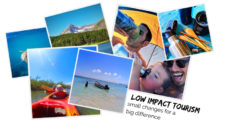


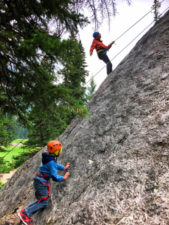
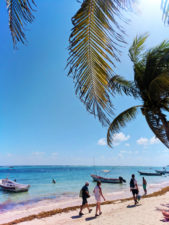
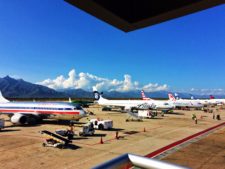
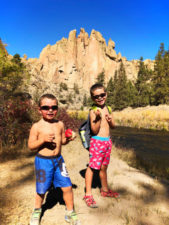
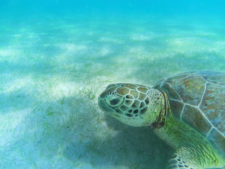
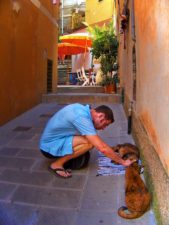
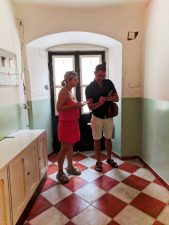
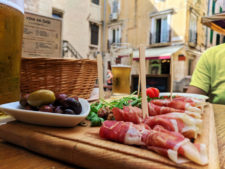
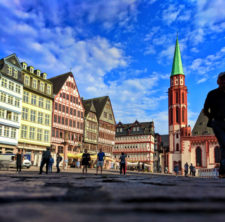
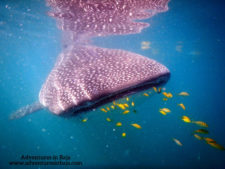



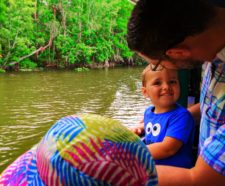
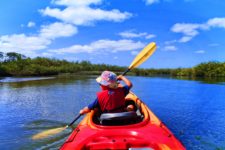
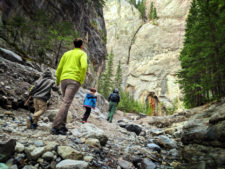
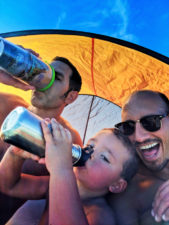


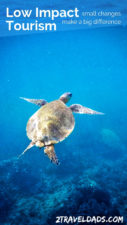
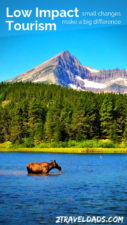
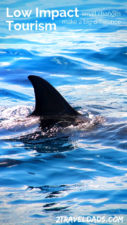

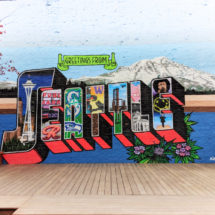
Unfortunately some cities are already suffering damage from predatory tourism. Although awareness should solve the problem, many destinations end up having to limit the number of tourists.
Yep, lots of cities are having talks about limiting visitors. It’s sad and necessary. The world is growing every day and people are finding new ways to see it all. I both want to encourage it and also mitigate the irresponsible ways of visiting.
You’ve got my mind buzzing already. So many things to think about that I didn’t before. Shame on me but I am learning and starting to make changes! Thank you for sharing and at least I can start my kids on a path towards sharing this world a little more responsibly!
We’ve only been truly aware and making conscious decisions about being low impact in all aspects of our lives for about a year. There has been a solid learning curve, including endless epiphanies about things we do or buy that we can do without or find an alternative for. It takes time, but share your journey with others!!
Wonderful article and great tips when traveling. We need to preserve those beautiful creatures and places for the next generations.
Public transportation is the best way to lower the impact while travelling. Also, the benefit of local transportation is that you get a chance to interact with the locals. Take advantage of locals while travelling such as learn how to read map and navigate through the city.
I do agree that when in country it is the best. I think a lot of people shy away from it when they don’t speak the language or understand the transportation system. For sure, our favorite way to explore though!